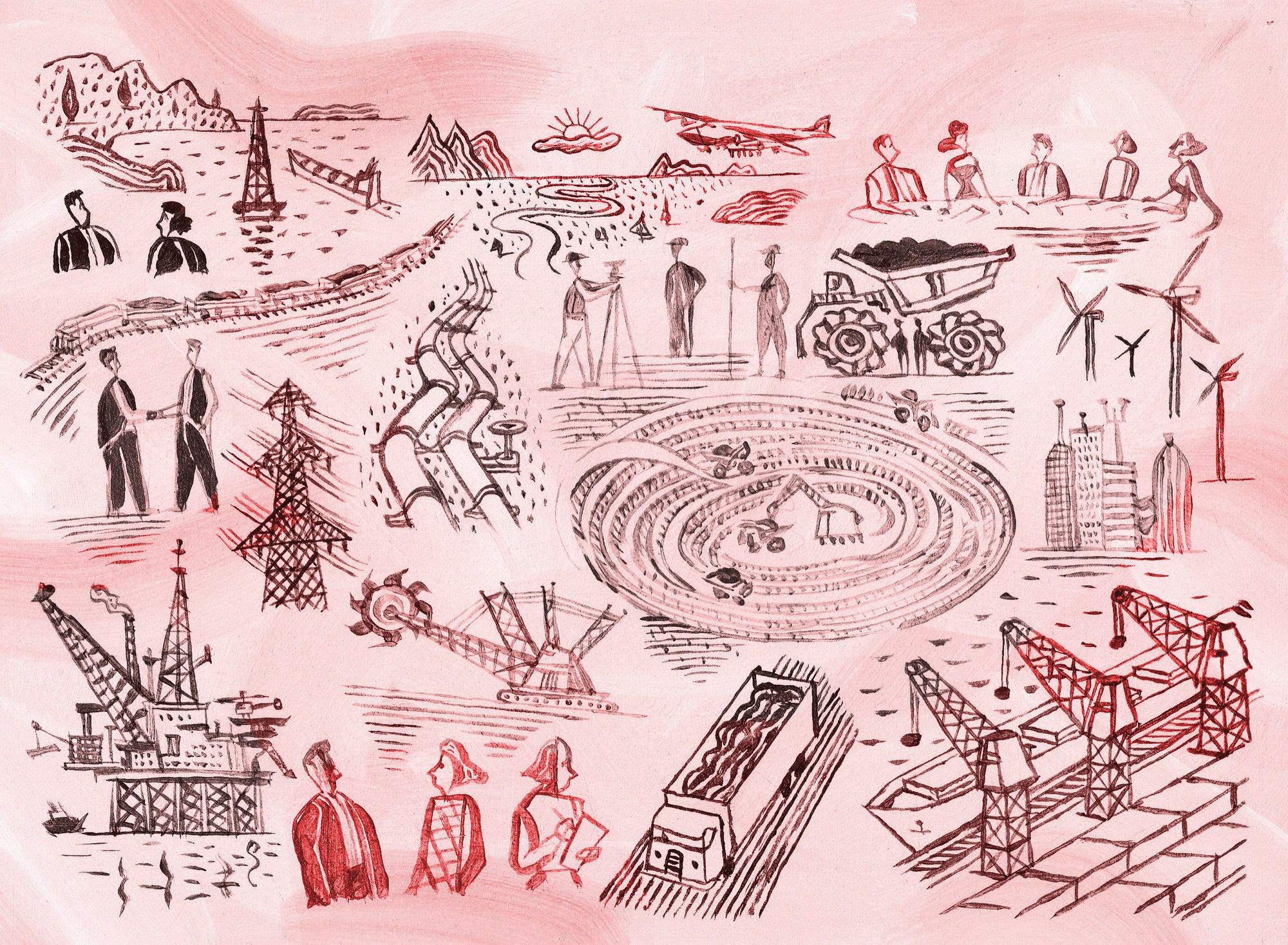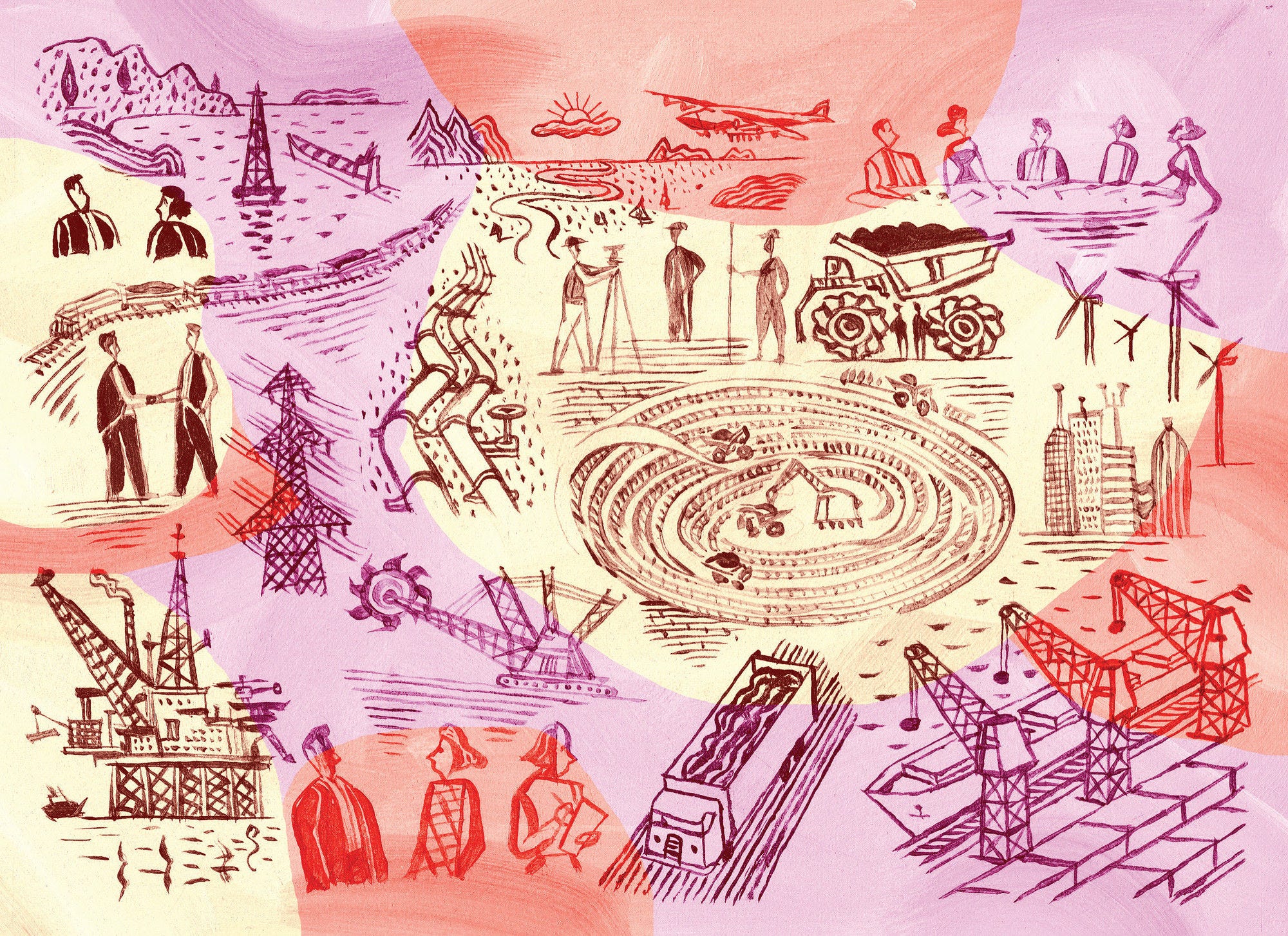The Future of Rural Manufacturing provides insights on the transformations that have occurred in manufacturing across rural regions in recent decades. It describes opportunities and challenges in this context, highlighting those relating to climate and demographic change and digitalisation, as well as shifting patterns in globalisation. With support from the European Commission, the project combines a wide range of both quantitative and qualitative analysis. The former examines broad trends in manufacturing performance across OECD rural (TL3) regions between 2000 and 2019, with deeper dives that draw on more granular microdata in 14 OECD countries. Case studies were conducted across 12 regions in Slovenia, Germany, Italy, and France. They comprised interviews with over 300 local, regional, and national actors across government, private sector, universities, research institutes, NGOs and non-profit community organisations. The project also benefited from foresight and futures workshops conducted in January and July 2022 with experts and policymakers across OECD countries.
The Future of Rural Manufacturing

Abstract
Executive Summary
Over the past 2 decades, manufacturing employment across OECD economies has declined, amounting to a loss of 8.6 million jobs between 2000 and 2018. Several factors explain this trend, including outsourcing, globalisation and productivity-enhancing automation. These have led to increasing tertiarisation in OECD economies, particularly in higher income economies, with services now accounting for around 70% of gross value added (GVA).
Metropolitan regions – through their higher densities and agglomeration effects – have been better equipped to benefit from these shifts. In contrast, rural1 regions – with thinner and more fragmented internal markets – have a more limited scope to boost productivity in services. This partly explains the significant gaps in gross domestic product (GDP) per capita between rural and metropolitan regions. On average, metropolitan regions across the OECD had around 32% higher GDP per capita than other regions in 2020. Moreover, differences in GDP per capita between large metropolitan and other regions account for the largest share of regional inequality in most countries. Whilst there is scope for gaps to narrow with greater uptake of digital tools in rural regions, metropolitan regions have much stronger comparative advantages in services than rural areas (e.g. through investment in digital infrastructure where large urban-rural gaps exist across the OECD).
Rural regions have a comparative advantage in manufacturing, at least compared to metropolitan areas. With new shifting patterns emerging in international production networks and global value chains (GVCs) following the COVID-19 pandemic and Russia’s war of aggression against Ukraine, many countries are now embarking on an unprecedented number of investment programmes and new industrial policies, with increasing emphasis on leveraging the potential of rural manufacturing. As such, there is a need to better understand how manufacturing has been transforming over the past decades across OECD rural regions and the impact that these changes may have.
Manufacturing remains an important driver of jobs and growth in OECD rural economies
Manufacturing contributes substantially to rural jobs. This report finds that in 2018, around 1 in 5 jobs in rural areas were in manufacturing. At the same time, despite rural regions making up only 28% of the OECD population, rural regions accounted for nearly half (48%) of manufacturing jobs in the OECD. Across several rural places, the role of manufacturing can be even greater. In the region of Tuttlingen, Germany, for example, manufacturing employment accounted for almost half (47.5%) of the region’s workforce in 2019. Moreover, manufacturing remains a significant employer even in many regions that have seen large falls in manufacturing employment over the last two decades. For example, the traditional textile manufacturing region of Biella, (in the northern region of Piemonte, Italy, still had 1 in 4 people employed in manufacturing in 2019, despite its share falling by 15 percentage points since 2000.
Furthermore, manufacturing is an important driver of growth in rural economies. The manufacturing sector’s direct contribution to rural GVA increased in OECD rural regions from 18.5% to 21.1% from 2000 to 2019 and the sector also supports a significant proportion of upstream service sector jobs, including in metropolitan regions. But manufacturing also sustains jobs in services through other indirect channels, including induced effects (i.e. spending of manufacturing workers on services) and through the use of produced capital in the production cycle. Estimates for the United States (National Association of Manufacturers), for example, reveal that for every job in manufacturing, 4.4 additional jobs were sustained in other sectors.2
Between 2000 and 2019, 92% of rural regions saw a productivity increase. Amongst these, close to two‑thirds of them (58% or 449 of the 769 OECD rural regions) also saw increased output. Productivity increases were also driven by contractions in employment. Amongst the rural regions that experienced productivity gains, 63% also experienced employment losses in manufacturing. In rural regions, however, this share was lower (63%) than in large metropolitan areas (76%).
Rural regions have a diverse ecosystem of manufacturing activities
Rural regions contain a diverse range of actors in the manufacturing ecosystem. These range from first- and second-stage processing firms of agri-food products, entrepreneurs bringing innovations to remote areas, medium-sized family businesses and large-scale multinationals, amongst others. In a global marketplace, manufacturing activities in many OECD rural places no longer enjoy the same scale of competitive advantages due to low labour costs and thus need to find ways to differentiate.
One way of product differentiation is through brand and quality. These have been a marker of success in some rural regions for centuries and play a critical role in forming the fabric and identities of individuals. Before industrialisation, manufactured goods in some rural places were produced by craftsmen and artisans working in small workshops dispersed throughout the territory. Many have continued to specialise in these activities and thus have developed an in-depth knowledge of these industries. Whether this be Italian leather, pottery from Karatsu, Japan, or Swiss watches, this form of manufacturing contributes to cultural heritage on the one hand and to regional exporting activity on the other.
Differences in local comparative advantages will drive locational choices for larger firms looking to set up new manufacturing businesses. These include factors such as labour costs, the regulatory environment, skills, accessibility to markets, communications infrastructure and geographic location (e.g. proximity to large manufacturing hubs), many of which have been instrumental in shaping manufacturing pathways in Central Europe. For example, on average, manufacturing employment shares in Central Europe were significantly higher than across many OECD and European Union economies. In the Czech Republic, the average share of manufacturing employment was 30% across regions in 2019; in Hungary and Slovenia, it was around 24% and in Bulgaria, Estonia, Poland, Romania and the Slovak Republic, it ranged between 20% and 23%, against the OECD average of 15.5% during the same year.
The manufacturing sector is transforming
The analysis examines the major factors transforming manufacturing point to several key and interlinked drivers.
Production processes have become increasingly fragmented and shifting patterns of trade are emerging. Manufacturers in successful OECD rural areas, notably in Central and Eastern Europe, were able to leverage relatively lower unit labour costs, proximity to European GVC hubs and entry to the European single market. Many others were also able to identify niches and specialisations in GVCs by upgrading existing manufacturing processes to higher value activities of those chains, boosting productivity in the process. These include the region of Arezzo in Italy, which built on its expertise in handcrafted textiles to modernise through computer-aided design to provide more tailored services and products to a wider audience, helped in addition by its geographical proximity to Milan. As seen through the case studies, these transitions can build on a region’s existing path dependency that either: i) leverages diversification for economic activities where the region has, or had, a relative comparative advantage in the past; or ii) moves on to new activities in which the skillsets, and often capital, can be transferred.
Manufacturing processes are increasing their use of digital and advanced technologies, including automation. Rural regions display a lower intensity of technology in manufacturing activities than in metropolitan regions. The analysis cannot differentiate if this is due to lower use of technology within the sector or to less technology overall in the region. The employment share across types of OECD Territorial Level 3 (TL3) small regions in 14 OECD countries shows that rural regions tend to have a higher share of employment in sectors that are considered less technically complex3 (45.5% compared to 38.5% in large metropolitan regions). Despite this, the share of more technologically complex manufacturers in rural areas is growing. From 2008 to 2019, the average share of rural manufacturing employment in high and medium-high technology industries increased from 5.7% to 6.4%.
The green transition is accelerating, creating new manufacturing requirements and prospects. Not surprisingly, given their higher shares of manufacturing, rural regions tend to have higher shares of higher-emitting manufacturing industries. Furthermore, rural places are highly dependent on transport to move and export their output, which adds to greenhouse gas emissions. Yet, the transition to a net zero emissions economy can provide innovation and development opportunities. Rural regions cover approximately 80% of the OECD land mass, containing most of the water and other natural resources that can also provide renewable and cleaner energy sources for manufacturing activities.
Driven by these trends, the demand for skills and labour in manufacturing is changing. Rural regions can benefit from the transformations of manufacturing, for example utilising automation to counteract skills shortages that are growing in regions facing depopulation. The green transition can form a source of alternative jobs, yet, currently, the share of green jobs in remote rural regions can be as low as 5% compared to capital cities, where these can be as high as 30%. At the same time, as most green job growth is expected to occur in currently male-dominated sectors, there is also an imperative to address potential gender gaps that may emerge. Currently, women make up only 28% of green-task jobs. Manufacturing jobs overall are held predominantly by men (70%).
Case study policy takeaways
The study examined 12 case studies from four countries, identifying recommendations for each case study. Several common recommendations emerged that can help rural regions take advantage of the transformations in the manufacturing sector and mitigate some of the growing challenges. These include:
Programmes and initiatives to overcome skills shortages by: tailoring educational and skills programmes to future skills demands based on skills mapping; upgrading digital skills, particularly for ageing workers; mobilising female workers in emerging non-traditional activities; and improving the image of the industry to attract new workers, including youth.
Developing effective land use and spatial planning to meet the demand of land required by manufacturing activities, in expanding new sites, building housing lots for workers and providing digital infrastructure. The case studies identified delays in regulatory instruments and granting permits as well as the exclusion of land that is protected by the environment. Long-term strategies for spatial planning that embed flexible land use legislation can more effective to balance the growth of industry with environmental conservation and bring stability to potential investors.
Fostering innovation fit for rural manufacturing through strengthening links and aligning objectives between research institutes and businesses in established firms, start-ups and small and medium-sized enterprises (SMEs). Improving SME capacity, which is particularly low in rural remote places, through digital platforms and mobilising local networks such as the EU LEADER programme, can help to improve access to finance, reduce administrative barriers and take advantage of new opportunities connected to the green and digital transition.
Improving governance and strategies through pursuing a higher degree of integration between rural development and industrial policy, which operated in silos in most case studies. Industrial policies were often driven by national ministries with limited engagement of local communities and bottom-up initiatives. Small, fragmented initiatives that lack economies of scale were also present; thus, delivering policies at the right territorial scale can improve joint initiatives and building economies of scale. The case studies also revealed opportunities to further identify areas of local competitive advantage and product differentiation.
Notes
← 1. For the purposes of this report, rural is referred to in the text when the analysis makes use of non-metropolitan regions based on OECD extended typology. See https://dx.doi.org/10.1787/b902cc00-en for more details.
← 2. Including in the non-durable manufacturing sector.
← 3. The report categorises technologically intense in manufacturing using 2-digil level sub‑industries of the European Community Statistical Classification of Economic Activities Rev. 2. It classifies four technological intensity categories: high technology, medium-high technology, medium-low technology and low technology following the Eurostat methodology.










